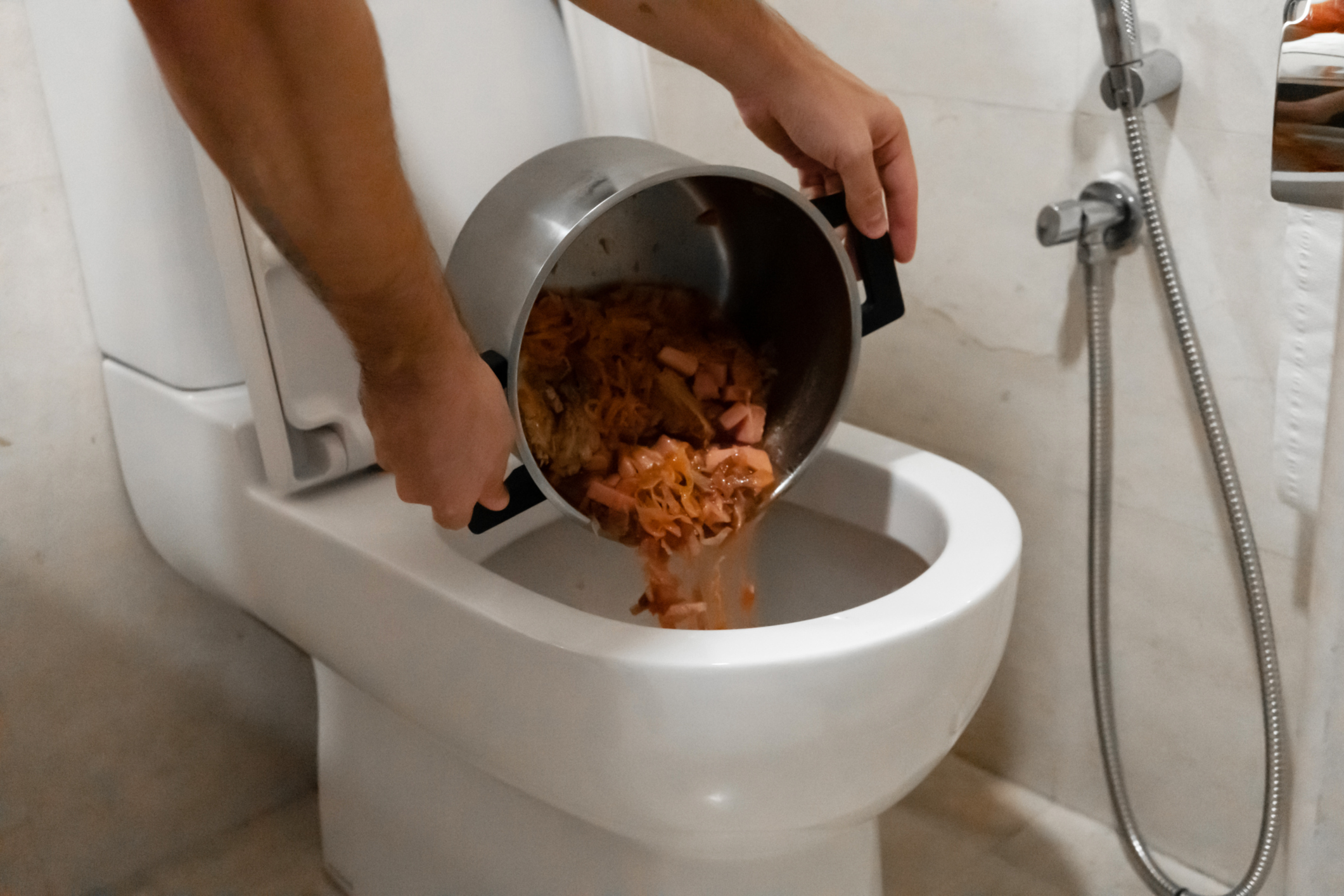Can One to Dispose of Food in the Toilet?
Can One to Dispose of Food in the Toilet?
Blog Article
This great article down below about What Can Happen If You Flush Food Down the Toilet? is rather informative. Have a go and draw your own findings.

Introduction
Many individuals are commonly faced with the predicament of what to do with food waste, particularly when it concerns leftovers or scraps. One usual question that develops is whether it's okay to flush food down the bathroom. In this short article, we'll delve into the reasons that people may take into consideration purging food, the repercussions of doing so, and different approaches for appropriate disposal.
Reasons why people may think about flushing food
Absence of awareness
Some individuals might not know the prospective injury triggered by purging food down the bathroom. They might erroneously believe that it's a safe technique.
Benefit
Purging food down the commode might feel like a fast and very easy remedy to throwing away undesirable scraps, specifically when there's no neighboring trash can offered.
Idleness
Sometimes, individuals might merely pick to flush food out of large idleness, without considering the consequences of their activities.
Repercussions of flushing food down the toilet
Ecological effect
Food waste that ends up in waterways can add to air pollution and harm aquatic ecological communities. In addition, the water used to flush food can stress water resources.
Plumbing concerns
Purging food can cause stopped up pipes and drains pipes, causing pricey plumbing repair services and hassles.
Kinds of food that need to not be flushed
Coarse foods
Foods with fibrous structures such as celery or corn husks can obtain entangled in pipes and trigger clogs.
Starchy foods
Starchy foods like pasta and rice can soak up water and swell, resulting in clogs in pipelines.
Oils and fats
Greasy foods like bacon or food preparation oils ought to never be flushed down the bathroom as they can solidify and trigger obstructions.
Correct disposal methods for food waste
Using a waste disposal unit
For homes equipped with garbage disposals, food scraps can be ground up and flushed with the plumbing system. However, not all foods are suitable for disposal in this fashion.
Recycling
Particular food packaging materials can be recycled, reducing waste and minimizing environmental impact.
Composting
Composting is an environment-friendly method to take care of food waste. Organic products can be composted and utilized to improve dirt for horticulture.
The relevance of proper waste management
Minimizing ecological damage
Correct waste administration methods, such as composting and recycling, aid minimize air pollution and preserve natural resources for future generations.
Securing pipes systems
By staying clear of the method of flushing food down the commode, house owners can stop pricey pipes repair work and maintain the honesty of their plumbing systems.
Final thought
In conclusion, while it might be appealing to flush food down the bathroom for benefit, it is essential to recognize the possible repercussions of this action. By taking on appropriate waste management methods and throwing away food waste responsibly, individuals can add to healthier plumbing systems and a cleaner environment for all.
FLUSH FOOD DOWN THE TOILET?
FLUSHING FOOD CAN CAUSE BLOCKED DRAINS IN YOUR HOME
All of the plumbing fixtures in your home are connected to the same sewer pipe outside of your home. This outdoor sewer pipe is responsible for transporting all the wastewater from your home to the Council sewer mains. Even small pieces of food that go down the kitchen sink can cause problems for your sewer. It should therefore be obvious that flushing larger bits of food, such as meat, risks a clog in either the toilet itself or the sewer pipes. Flushing greasy food is even more problematic because oil coagulates when it cools, coating the interior lining of your pipes.
THE TOILET IS NOT A BIN
Food isn’t the only thing that people shouldn’t be flushing down the toilet. People use the toilet to dispose of all kinds of things such as tampons, makeup wipes, dental floss, kitty litter and even underwear. Water goes to great lengths to educate residents about the high costs and stress placed on wastewater treatment systems simply from people flushing the wrong stuff down the toilet. It costs taxpayers millions of dollars each year, and homeowners thousands in blocked drain repairs.
FLUSHING FOOD IS A WASTE OF WATER
Flushing food is a waste of our most precious resource - water. In June this year Level 1 water restrictions were introduced to protect water supply from drought conditions. Much of New South Wales continues to be affected by prolonged drought with recent figures revealing up to 97 per cent of the state remains in drought. Depending on whether you have a single or dual flush toilet, every single flush uses between five and 11 litres of water. In the current climate this is a huge amount of water to be wasting on flushing food that should be placed in the bin (or better yet, the compost).
https://www.jabplumbingsolutions.com.au/blog/can-you-flush-food-down-the-toilet

I discovered that post about Think Twice Before Flushing Food Down Your Toilet while doing a lookup on the internet. Sharing is good. Helping others is fun. Thank you for being here. Come back soon.
Schedule Today! Report this page